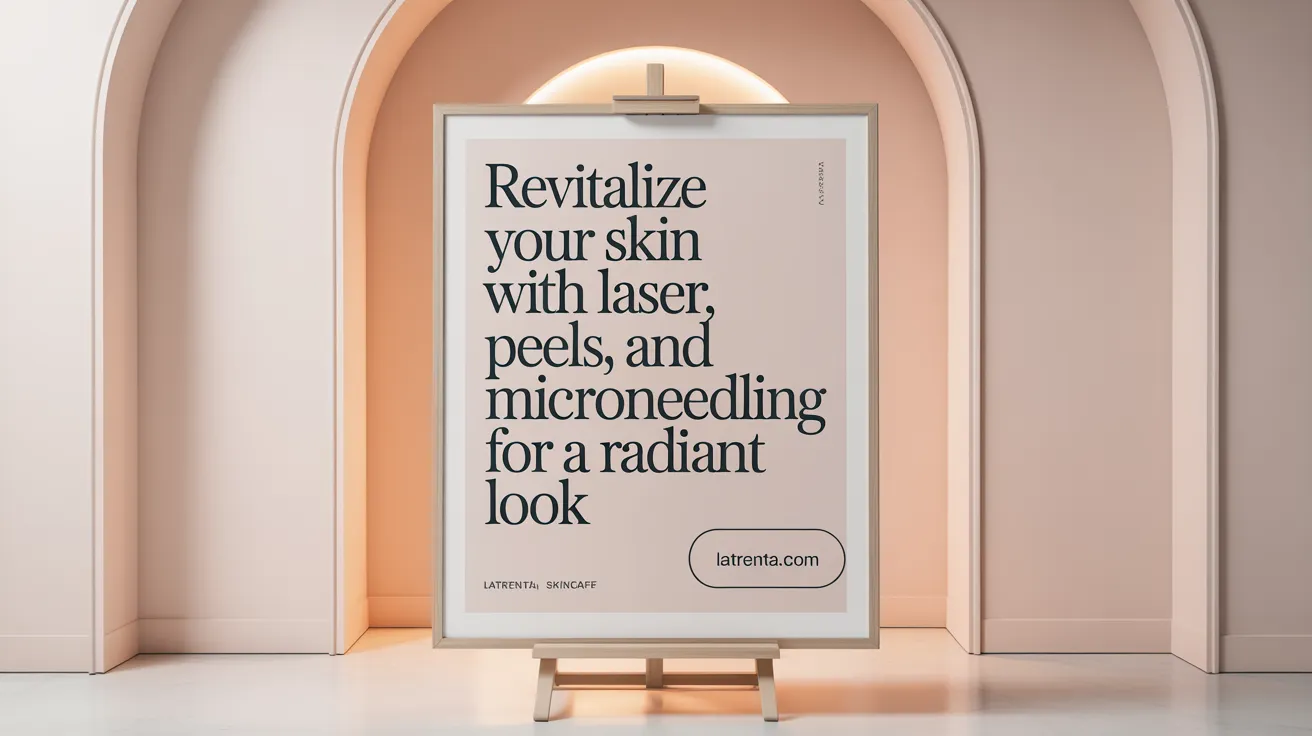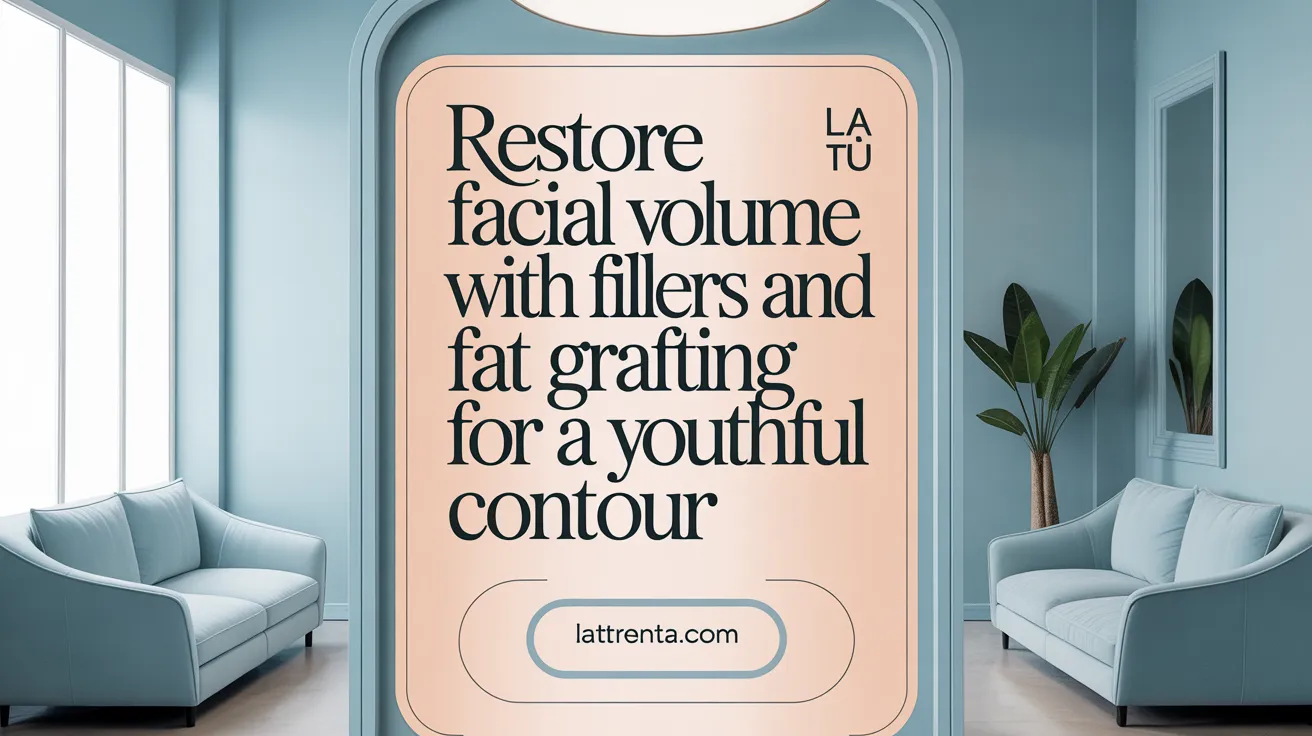Introduction to Facial Rejuvenation for a Youthful Glow
Understanding the Signs of Facial Aging
As we age, our skin undergoes various structural changes that manifest as visible signs such as loss of firmness, wrinkles, sagging skin, and uneven skin tone. These changes primarily result from declining collagen, elastin, and hyaluronic acid levels within the dermis, causing loss of elasticity and volume. Facial contours soften as underlying fat pads shift downward, contributing to wrinkles and a tired appearance.
Objectives of Facial Rejuvenation
Facial rejuvenation aims to restore a youthful, vibrant look through techniques that improve skin texture, tighten sagging tissues, and replenish lost volume. This includes reducing wrinkles, addressing skin discoloration, and refining facial contours to achieve a harmonious and natural aesthetic.
The Importance of Personalized Treatment Plans
Optimal outcomes depend on customizing therapies to each individual's unique facial anatomy, skin condition, and aesthetic goals. Whether through surgical approaches such as facelifts and blepharoplasty or advanced non-surgical options like injectables and laser resurfacing, tailored treatments ensure enhanced safety and natural-looking results. Consulting with board-certified specialists guarantees an expert evaluation and precise treatment selection to maintain facial harmony and a radiant complexion.
Understanding Facial Aging and Its Impact on Appearance

Signs of Facial Aging Including Wrinkles, Volume Loss, Sagging Skin
Facial aging commonly manifests as wrinkles and sagging skin, loss of skin firmness and elasticity, sagging skin, and volume depletion. These changes become apparent through the development of deep creases, jowls along the jawline, and a dull skin texture. The loss of youthful facial contours contributes significantly to an older, tired appearance.
Role of Collagen, Elastin, and Hyaluronic Acid in Skin Aging
The structural integrity of the skin largely depends on the dermis layer aging, which contains collagen, elastin, and hyaluronic acid. Collagen provides tensile strength, elastin maintains skin elasticity, and hyaluronic acid ensures hydration and volume. Around the age of 35, the natural production of these components declines, leading to loss of firmness and elasticity, fine lines, and a loss of youthful plumpness.
How Fat Pad Displacement Affects Facial Contours
Facial volume loss is exacerbated by the downward displacement of fat pads, a natural consequence of tissue aging. This migration causes sagging around key areas such as the cheeks, nose, and jawline, which accentuates wrinkles and jowls and contributes to a less defined facial shape. Treatments include facial fat grafting and nonsurgical dermal fillers.
Areas First Affected by Aging Such as Eyelids and Neck Anatomy
The delicate eyelid skin is among the first to show signs of aging due to its thinness, resulting in drooping lids, puffiness, dark circles, and crow’s feet. Options to address these concerns include eyelid surgery (blepharoplasty) and injectables for forehead wrinkles. Similarly, the neck is prone to sagging skin and the development of jowls, impacting facial definition, which can be improved with a neck lift surgery.
Why Recognizing Aging Patterns Is Crucial for Treatment Planning
Understanding individual aging patterns—including the progression of volume loss, skin laxity, and changes in facial anatomy—is essential. This knowledge guides personalized treatment strategies, whether surgical or non-surgical, to restore harmony and natural rejuvenation results optimized to each patient's unique facial structure.
Non-Surgical Facial Rejuvenation: Techniques and Benefits

Popular Non-Invasive Treatments Like Botox and Dermal Fillers
Among the most sought-after non-surgical facial rejuvenation treatments are Botox and dermal fillers. Botox, a botulinum toxin, works by relaxing targeted facial muscles, diminishing dynamic wrinkles such as crow’s feet and forehead lines. Dermal fillers, especially those based on hyaluronic acid fillers, restore volume lost due to aging, refining facial contours and enhancing features like cheeks and lips.
Mechanisms of Action for Botulinum Toxins in Reducing Dynamic Wrinkles
Botulinum toxins block nerve signals that cause muscles to contract. By selectively weakening these muscles, Botox reduces wrinkle formation from repetitive facial movements. Results often appear within 48 to 72 hours and typically last around three months.
Use of Hyaluronic Acid Fillers to Restore Volume and Contour
Hyaluronic acid fillers provide subtle enhancements by replenishing lost facial volume. These fillers smooth fine lines and folds, restore youthful contour, and stimulate collagen production. Depending on the filler type, effects last from six months up to two years, with reversibility through enzymatic treatment if necessary.
Skin Resurfacing Methods
Techniques such as laser treatments for skin, chemical peels, microneedling, and IPL photorejuvenation improve skin texture, tone, and pigmentation. Ablative and non-ablative lasers stimulate collagen production, while chemical peels exfoliate damaged skin layers. Microneedling creates microscopic skin injuries promoting natural repair, and IPL targets pigmentation and vascular irregularities.
Emerging Trends: Micro-Botox, RF Microneedling, and Combination Therapies
Newer approaches include micro-Botox for precise superficial muscle relaxation, radiofrequency (RF) microneedling benefits to tighten skin and enhance collagen synthesis, and combined protocols integrating injectables with laser or peel treatments. These trends emphasize subtle, natural enhancements and preventive care.
Advantages and Limitations of Non-Surgical Options
Non-surgical rejuvenation offers minimal downtime, reduced risks compared to surgery, and quick recovery. However, results are temporary and often require maintenance. These treatments are ideal for early to moderate aging signs but may not fully address severe skin laxity or deep wrinkles.
Importance of a Customized Approach and Trained Specialists
Optimal and safe outcomes depend on tailored treatment plans based on individual facial anatomy, aging patterns, and aesthetic goals. Expertise of board-certified specialists ensures natural-looking results while minimizing complications. Consultation and careful procedure selection remain essential for success.
Surgical Facial Rejuvenation: Facelifts and Complementary Procedures

Types of Facelifts: Traditional Full, Mid-Facelift, Lower Face and Neck Lift
Facelift surgery encompasses several tailored approaches targeting distinct facial areas. Traditional full facelifts address sagging and wrinkles across the lower and mid-face, extending from the temples down to the neck. Mid-facelifts focus primarily on the cheeks and mid-face, enhancing contour and volume, while lower face and neck lifts concentrate on tightening sagging skin around the jawline and neck to restore definition.
Techniques for Natural Results
Modern facelifts employ advanced techniques such as releasing supportive ligaments, repositioning underlying facial tissues, and removing excess skin. These methods ensure a harmonious lift that preserves natural facial expressions and avoids an over-tightened or 'pulled' appearance. Surgeons carefully balance skin redraping and deep tissue support to achieve subtle yet effective rejuvenation, as described in Natural-Looking Facelift Techniques.
Complementary Procedures
To address comprehensive aging signs, facelifts are frequently combined with complementary surgeries. Blepharoplasty repairs drooping or puffiness in the eyelids, restoring a refreshed eye contour. Brow lifts elevate sagging eyebrows and smooth forehead wrinkles, and Neck lifts target loose skin and fat accumulation under the chin and neck to reestablish a youthful neckline, enhancing overall facial harmony.
Surgeon Expertise and Procedure Customization
The success of surgical facial rejuvenation rests heavily on surgeon skill and individualized planning. Experienced double board-certified surgeons provide thorough consultations to assess facial structure, skin quality, and patient goals, crafting customized surgical plans. Such expertise ensures natural-looking outcomes aligned with patient expectations.
Recovery, Risks, and Longevity
Postoperative recovery typically spans two weeks, with common effects including swelling and bruising that subside over time. Potential risks include infection, scarring, and anesthesia complications, highlighting the importance of choosing qualified surgeons. Surgical results often last several years, particularly when supported by proper skincare and healthy lifestyle habits. Understanding cosmetic surgery risks and postoperative care is essential for optimal outcomes.
Combining Surgical and Non-Surgical Treatments
For extended rejuvenation, surgical facelifts may be complemented by non-surgical interventions such as dermal fillers, Botox, laser resurfacing, and chemical peels. This integrated approach enhances skin texture, tone, and volume, delivering balanced, long-lasting facial youthfulness, as discussed in Facial rejuvenation treatments and nonsurgical facelift overview.
Advanced Skin Rejuvenation: Laser, Chemical Peels, and Microneedling Treatments

How do skin resurfacing treatments improve texture, tone, and diminish pigmentation and wrinkles?
Skin resurfacing treatments restore a youthful complexion by removing damaged outer layers of skin and stimulating new skin cell growth. These procedures enhance skin texture, reduce wrinkles, scars, and discoloration, and promote collagen production, resulting in smoother, clearer, and more vibrant skin.
What are the different types of laser resurfacing and their suitability?
Laser resurfacing employs focused light energy and includes two main types:
- Ablative lasers (e.g., CO2, Erbium YAG) remove the outer layers of skin, providing significant reduction of deep wrinkles, scars, and severe discoloration (laser resurfacing techniques).
- Non-ablative lasers heat deeper skin layers without removing surface skin, promoting collagen growth for milder skin rejuvenation with minimal downtime (skin resurfacing treatments).
Some advanced options, like Fraxel and Sciton HALO, combine ablative and non-ablative effects for comprehensive results.
What are the chemical peel depths and their effects?
Chemical peels use varying acid strengths for different levels of exfoliation:
- Light peels remove only the outermost skin layers, improving mild sun damage and fine lines with minimal recovery (types of chemical peels).
- Medium peels penetrate deeper into the dermis to treat moderate wrinkles, pigmentation, and acne scars (chemical peels benefits).
- Deep peels reach the lower dermis for significant skin remodeling, addressing severe sun damage and deep wrinkles but require longer healing time (deep chemical peel treatments.
How do microdermabrasion and dermabrasion differ?
- Microdermabrasion is a gentle exfoliation technique suitable for all skin types, improving minor surface irregularities, fine lines, and dullness (microdermabrasion treatments.
- Dermabrasion is more aggressive, removing deeper layers of skin to treat more severe scars, wrinkles, and pigmentation issues, typically performed by experienced surgeons (dermabrasion).
What role does microneedling have in collagen stimulation and skin repair?
Microneedling creates tiny, controlled injuries in the skin, triggering the body's natural healing response and stimulating collagen and elastin production. This enhances skin texture, reduces fine lines, scars, and pigmentation irregularities with minimal downtime.
What are the safety considerations and importance of certified providers?
Advanced skin resurfacing procedures, especially deep chemical peels and ablative laser treatments, require skilled, board-certified cosmetic surgeons to minimize risks such as scarring and infection. Less invasive treatments can be safely performed by licensed professionals under supervision. Personalized treatment plans ensure suitability based on skin type and concerns, maximizing safety and outcomes (choosing a provider for skin resurfacing.
Volume Restoration and Contour Enhancement: Fat Grafting and Dermal Fillers

What Causes Facial Volume Loss and How Does It Affect Aging Appearance?
Facial volume loss primarily results from the downward shifting of fat pads and the decline of collagen, elastin, and hyaluronic acid in the dermis. This leads to sagging skin, wrinkles, hollowed cheeks, and diminished facial contours, contributing to an aged appearance characterized by jowls, fine lines, and altered facial shape. Learn more about Facial rejuvenation procedures.
What Are the Options for Temporary and Permanent Volume Restoration?
Treatment options for volume restoration include temporary dermal fillers and more permanent fat grafting procedures. Dermal fillers, typically composed of hyaluronic acid or collagen, provide immediate but temporary enhancement lasting from six months to two years. In contrast, fat grafting offers a longer-lasting solution by transferring the patient’s own fat to restore volume and improve skin quality.
How Does Fat Grafting Work and What Are Microfat and Nanofat Injections?
Fat grafting involves harvesting fat from areas such as the abdomen and injecting it into volume-deficient facial regions. Microfat injections replenish deeper volume loss, while nanofat injections target superficial layers to enhance skin texture, reduce fine lines, and minimize dark circles under the eyes. This dual approach offers both contour enhancement and skin rejuvenation.
What Roles Do Dermal Fillers Play in Facial Rejuvenation?
Dermal fillers are effective in augmenting cheeks, lips, the under-eye area, jawline, and smoothing fine lines. They provide subtle, natural-looking volume and contour improvements with minimal downtime, making them popular for patients seeking non-surgical facelift overview.
Why Is Fat Transfer Beneficial for Sagging Skin and Dark Circles?
Fat transfer not only restores volume but also improves skin laxity by stimulating collagen production and offering a natural filler. It is particularly beneficial for addressing sagging skin and under-eye dark circles, providing a rejuvenated appearance with enhanced skin quality. See more about facial fat grafting and fat transfer procedure.
How to Choose Between Dermal Fillers and Fat Grafting?
The choice depends on individual patient needs, desired duration of results, and specific aesthetic goals. Patients seeking immediate, less invasive treatments may prefer dermal fillers, whereas those desiring longer-lasting correction with added skin benefits might choose fat grafting. Comprehensive consultation with a board-certified plastic surgeon ensures a tailored approach to volume restoration.
Personalized Care and Future Trends in Facial Rejuvenation
Why is individualized consultation with a double board-certified surgeon crucial?
Personalized consultations enable surgeons to evaluate unique facial anatomy, skin quality, and aesthetic goals to design tailored treatment plans. Double board-certified plastic surgeons possess advanced expertise ensuring safety and effective results. This individualized approach avoids a one-size-fits-all strategy, optimizing outcomes with natural, harmonious rejuvenation that respects each patient’s features. Learn more about the importance of facial rejuvenation procedures and the role of a double board-certified facial plastic surgeon.
How do ongoing skin care, sun protection, and lifestyle impact facial rejuvenation results?
Maintaining results requires vigilant sun protection to prevent pigmentation and skin damage, alongside skincare routines enriched with antioxidants. Healthy lifestyle choices like avoiding smoking and managing stress contribute to skin vitality and prolong the effect of both surgical and non-surgical procedures. Follow-up care and occasional touch-ups further sustain a youthful appearance. For detailed insights on skin care post nonsurgical facelift and skincare and sun protection after treatment, see these resources.
What are the emerging technologies influencing facial rejuvenation?
Innovations such as AI-assisted facial mapping enable precise treatment planning tailored to dynamic facial expressions and individual anatomy. Advanced bio-stimulatory fillers promote natural collagen production for longer-lasting volume restoration. These technologies complement traditional methods to refine and enhance personalized outcomes with minimal downtime. Explore the latest trends in non-surgical facial rejuvenation and bio-stimulatory treatments.
Why is there increasing demand for preventative ‘prejuvenation’ treatments?
Younger patients are proactively seeking light-touch treatments—like refined Botox, microneedling, and skin tightening—to delay aging signs before they manifest. This ‘prejuvenation’ trend focuses on maintaining youthful skin through subtle, minimally invasive procedures, preserving natural aesthetics while reducing the need for extensive interventions later. For more information about BOTOX for preventing signs of aging and microneedling benefits, consult these sources.
How does combining surgical, non-surgical, and maintenance therapies enhance results?
Integrating surgical techniques such as facelifts and eyelid surgeries with non-surgical modalities—like injectables, laser resurfacing, and chemical peels—allows comprehensive facial rejuvenation. Maintenance therapies help sustain improvements over time. This multifaceted approach achieves balanced, natural-looking outcomes tailored to patients' evolving needs. Learn about facelift surgery options, eyelid surgery (blepharoplasty), and non-surgical facial rejuvenation techniques.
What roles do patient safety, realistic expectations, and professional credentials play?
Patient safety is paramount, underscoring the necessity of board-certified specialists who adhere to stringent protocols. Realistic expectations, discussed during consultations, align patient goals with achievable results, fostering satisfaction. Professional credibility ensures procedures are performed with optimal skill, knowledge, and ethical standards, minimizing risks and enhancing success. For trusted guidance, see the importance of patient safety and professional credentials and board-certified plastic surgeon consultation.
Achieving and Maintaining a Natural, Youthful Appearance
Surgical and Non-Surgical Rejuvenation Options
Facial rejuvenation encompasses a spectrum of procedures tailored to restore youthful contours and skin quality. Surgical interventions such as facelifts, neck lifts, and blepharoplasty effectively tighten sagging tissues, redefine facial contours, and address deep wrinkles. Advanced techniques prioritize subtle repositioning of underlying structures to avoid an overly operated look while enhancing natural beauty.
Non-surgical treatments include Botox and dermal fillers, which soften dynamic lines and restore volume respectively, offering temporary yet effective results with minimal downtime. Laser skin resurfacing, chemical peels, microneedling, and fat grafting further improve skin texture, pigmentation, and volume loss. These modalities can be combined or used sequentially to maintain a refreshed appearance.
Tailored Treatment Plans and Expert Care
Successful rejuvenation demands a customized approach crafted by experienced, board-certified plastic surgeons. Comprehensive consultations evaluate facial anatomy, skin condition, and aesthetic goals to select the most appropriate interventions. Combining surgical and non-surgical methods allows precise correction of individual aging signs, optimizing outcomes.
Continuity of care including post-procedure follow-up and integration of maintenance treatments helps prolong results. Adherence to sun protection, skin care protocols, and healthy lifestyle choices complement procedural benefits.
Commitment to Natural, Harmonious Results
Prioritizing facial harmony ensures enhancements integrate seamlessly with the patient’s features, preserving personality and expression. Skilled surgeons focus on balanced improvements rather than dramatic alterations to achieve a rejuvenated yet authentic look.
Ultimately, the combination of state-of-the-art techniques, individualized planning, and expert execution ensures patients can enjoy natural, lasting youthfulness with confidence.
